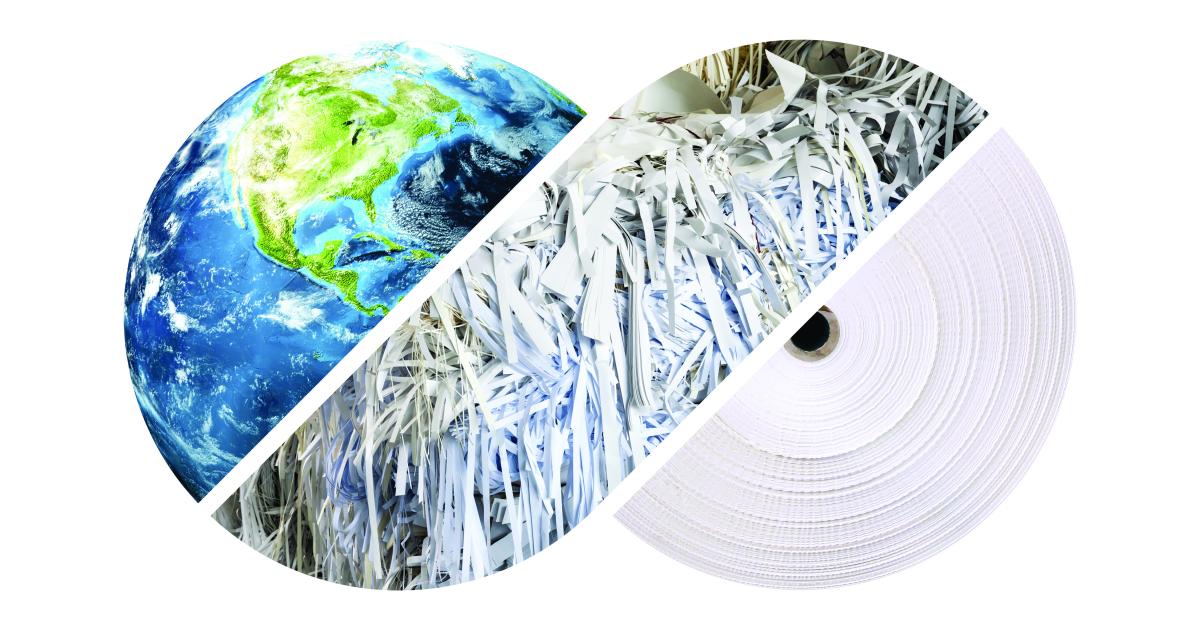About one-third of packaging worldwide is made of paperboard, and demand for this material and other cellulose fiber is growing as regulators and consumers, worried about climate change, call for a reduction in single-use plastics. Simultaneously, booming e-commerce and food industries further drive packaging production, shining more light on the need for environmentally friendly designs where material can be easily recycled, reused, or repurposed.
Brands and consumer packaged goods companies (CPG) are responding, making bold commitments to improve the sustainability of their packaging and help advance a circular economy. Some of them are rethinking their whole process, from the amount of recycled content they incorporate to how they work with suppliers.
As companies aim for new, sustainable innovations, it is important that alternatives to single-use plastic do not create more or worse challenges than those we are working to solve. We have to be strategic as we try to course correct and move from a linear, take-make-dispose trajectory toward a circular economy.
Sustana’s part is to make sure materials that come to us at the end of life are fully recyclable so they can go into new packaging today, and so we can continue to feed the supply chain in the future.
The good news is that we can add significant levels of recycled content without compromising strength or functionality of the product. As brands begin to understand these capabilities and to express interest in using this content, we see opportunity, which we believe will be an ongoing trend.
Historically almost 100 percent of Sustana’s products went into printing and writing paper and tissues. Based on market shifts we are seeing, I suspect that over the next 10 years, 80 to 90 percent of our recycled fiber will go back into packaging, with a large share of that delivered to the food and beverage industry. The food and beverage packaging market, valued at over $300 billion, is projected to reach about $411 billion by 2026.
We can also support companies on collecting postconsumer material and provide a dependable supply of feedstock for new packaging. But to continue feeding the supply chain we must be able to collaborate closely with package designers as they vet plastic-free alternatives. It’s how we can ensure we are able to recycle what they engineer downstream — packaging eco-design of packaging, for example, must become the norm.
“Ecodesign is a concerted approach engaging all actors in decision-making from design to supply and merchandising,” said Geneviève Dionne, director of ecodesign and circular economy at Éco Entreprises Québec. “Only actions reflecting a conscious shared responsibility between all actors can transform our business practices and lead to lasting changes in consumer behaviors.”
Important to our success is that we start early, reviewing companies’ technologies on the front end of development. By working with designers during the design stage, we can align what’s coming through our back door with what goes out our front door. We avoid potential pitfalls, ultimately saving everyone time and money.
For instance, we are seeing a lot of efforts to make barrier coatings that can be incorporated into paper-based packaging, enabling an alternative to plastic. As companies focus on ways to keep moisture and oils in the packaging, and to keep oxygen out, they should concentrate equally on recyclability.
We can process a fair amount of what comes to us, including the plastic-free barrier coatings that we have received to date; we can separate them. These barrier coatings typically are broken down in our pulping process and removed in the initial stage of flotation. We can also remove silicone from release liners and separate cellulose from multilayered structures.
However, while sophisticated technology exists, it is capital intensive. Many recyclers don’t have the equipment to process complex materials. And as designs change, even those of us who can handle much of what’s produced today will need assurance we can recycle new products in the pipeline.
“Focus on the streamlining of packaging concepts, prioritize single-material options, and reduce the use of ink and adhesives while integrating recycled content as much as possible,” said Dionne. “These types of actions all yield more efficiency in the packaging value chain.”
We do not need to know designers’ chemical formulas. We can take samples to identify or rule out potential issues. In some cases, we can figure out how to adjust our existing infrastructure to be able to process alternatives, if we know in advance what we are dealing with.
Equally important to ensuring recyclability is prioritizing the use of recycled material. Not all developers consider this point during the design stage. Yet this is an integral part of the strategy to achieve circularity, as “recyclability” and “recycled content” work hand in hand. If packaging is engineered for recyclability from the start, it becomes easier to continuously reintroduce end-of-life material into new packaging, ultimately maximizing reuse and repurposing.
Brands are also focusing on the recyclability of their products, and many of them are setting ambitious sustainability goals. Their purchase decisions should align with these ambitions by also procuring recycling content.
I would ask organizations: How do you see your sustainability objectives driving your procurement decisions? Are you starting to demand recycled content from suppliers? Setting this expectation of vendors is key to advancing a truly circular economy.
There has to be a way to monetize that circularity. This requires a deep analysis of the costs and likely impact of decisions brands are considering and aligning those decisions with their sustainability goals. A lifecycle analysis can help inform and guide this process.
There’s clearly a cost to sustainability, but it comes with value, too. Through their investments, companies show their commitment to addressing the environmental concerns of consumers — the stakeholders who ultimately drive market demand. Consumer packaged goods companies, brands and manufacturers also stay ahead of emerging regulations and policies around plastic and packaging waste.
The key to achieving sustainability is transitioning from linear thinking to circular thinking. To succeed at this undertaking, the wheels must start turning upstream, with the package creation strategy pulled through the supply chain — meaning the brand owner is requiring recycled content in their packaging — rather than seeking a solution for these products at the end of the line. This will align the entire supply chain, and then circularity will begin.
As packaging producers, it’s our responsibility to balance the functional needs of the package to protect the product and provide the required shelf-life while ensuring that we minimize our environmental footprint through designs that incorporate high levels of recycled fiber and are also recyclable.
— Elizabeth Rhue, VP Global Environmental & Sustainability at Sonoco
Credit: Source link



